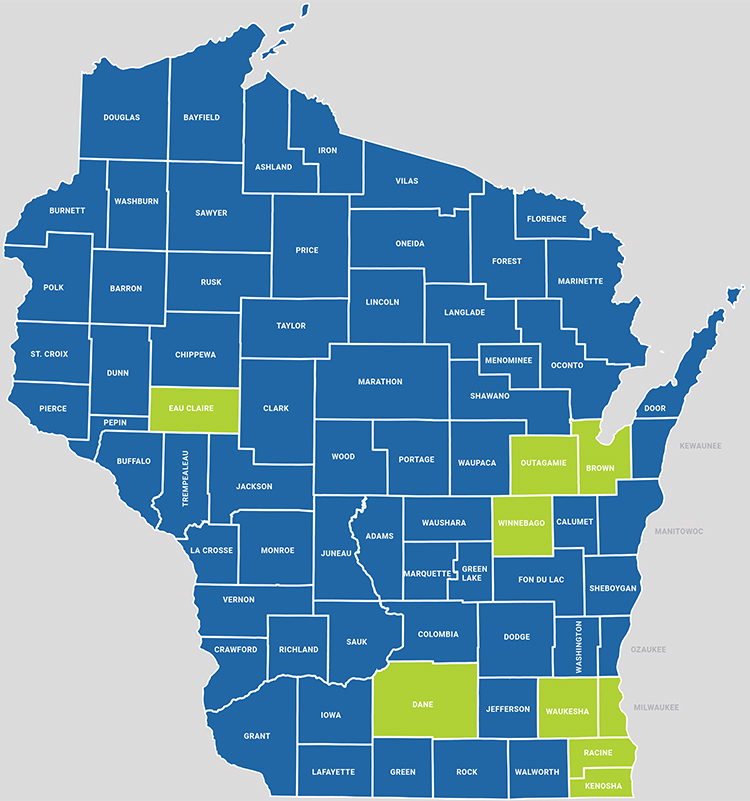The shortage of affordable workforce housing in rural Wisconsin poses far-reaching challenges. Access to safe, affordable shelter is fundamental to the sustainability of our communities because housing provides a foundation for public health, economic well-being and environmental stewardship. If Wisconsin is to thrive, rural communities require effective tools and support to develop affordable workforce housing.
The causes of the affordable workforce housing shortage in rural Wisconsin are many and vary by community, requiring both technical and adaptive solutions. While some problems can be solved through a combination of funding and technical program changes, addressing other challenges will necessitate adaptive changes in community priorities, policies and practices.
Participants at a series of statewide listening sessions organized by the Wisconsin Housing and Economic Development Authority (WHEDA) pointed to a number of factors contributing to the rural, affordable workforce housing shortage. These factors include:
- Rising construction costs
- Limited developer interest due to the smaller scale of rural projects
- Aging housing stock
- Few affordable rental options
- Zoning and infrastructure challenges
- Limited financing for new construction and renovation projects
Rural workforce housing initiative
To help address these issues, WHEDA developed a $10 million rural affordable workforce housing initiative that features a pilot effort to work with at least three rural communities as well as supplemental financing tools to overcome gaps in existing programs. The supplemental financing tools are designed to better serve rural communities by overcoming gaps in existing programs. The financing tools include the following:
1. Single-family rehabilitation mortgage loan program expansion
Through this initiative, WHEDA intends to expand and promote the single-family rehabilitation loan offered in rural areas through partnerships with local lending institutions. The product would be subject to WHEDA income guidelines and purchase price guidelines.
The home improvement loan program product would address single-family home appraisal gaps in areas that would not otherwise support loan-to-value ratios traditionally required for existing rehabilitation loan products. WHEDA also intends to expand its reach and use in rural areas.
2. Rural multifamily program enhancements
Under this initiative, WHEDA’s efforts to expand rural access to multifamily financing include the establishment of a multifamily subordinated loan pool targeting housing tax credit projects in rural communities. This targeted loan pool will greatly enhance the financial viability of these projects under WHEDA’s Qualified Allocation Plan.
Application process and eligibility
At least three communities will be selected as participants in the rural affordable workforce housing pilot program. To be considered rural, a community must be within a county in which more than 25% of the county’s residents reside in a rural area under standards established by the United States Department of Agriculture.
Applicants are encouraged to apply with a diverse team of stakeholders that demonstrate geographic, demographic, public and private collaboration. Examples may include regional and city-county partnerships, businesses, nonprofits, technical colleges, stakeholder groups, community financial organizations and more. The term “community” is loosely defined, and partners may include counties, cities, towns, villages and regional development entities as well as a combination of these and others. It is the applicant’s responsibility to define the parameters and boundaries of the “community” per the unique experience with the workforce housing challenge.
A competitive scoring process will be used to select at least three pilot communities. Communities will be selected based on competitive criteria, including:
- Demonstrated need for workforce housing and understanding of the local/regional “housing gap."
- Existing momentum within the community related to the workforce housing issue.
- Commitment from local employers, local government entities and others to ensure close collaboration throughout the pilot process and implementation.
- An assessment of need.
- Presence of other community resources, land use provisions and more that provide for leverage of invested or loaned funds by WHEDA or others.
In July, WHEDA made applications available on its website. These applications are due August 31 with participating communities announced in October. See more at www.wheda.com/about-wheda/rural-workforce-housing.
Additional information regarding the rural initiative, supplemental financing and economic development tools will be made available in the near future as WHEDA continues to adapt and innovate to address changing community needs. To keep up with information about the pilot and other WHEDA initiatives, sign up for WHEDA emails at www.wheda.com/working-with-wheda/sign-up and follow WHEDA on Facebook, Twitter and LinkedIn.
Tom Larson is Senior Vice President of Legal and Public Affairs for the WRA. Jennifer Sereno is Public Affairs Program Manager for the Wisconsin Housing and Economic Development Authority.
Wisconsin Rural County Map
Green counties: Less than 25% of the county is considered rural
Blue counties: More than 25% of the county is considered rural
The counties shaded in blue are those considered rural counties under WHEDA’s rural workforce housing pilot program. To be considered rural, communities must be within a county in which more than 25% of the county’s residents reside in a rural area under standards established by the United States Department of Agriculture.
